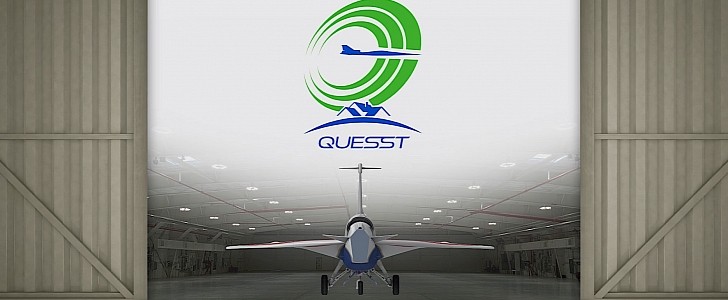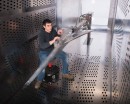Ever since the Concorde was retired, civilian air transportation was left without any means of going past the speed of sound. But even when the Concorde was around, supersonic travel was only available over water, because of regulations.
We have to thank for that the huge number of complaints filed in the 1950s and 1960 by civilians put on edge by the disturbances caused by military supersonic aircraft going all sonic boom over land. The Federal Aviation Administration (FAA) stepped in and banned all overland supersonic commercial flights.
With a bit of luck, NASA will change all that. For about four years now the space agency and its partners have been working on a technology demonstrator that should validate a new aircraft design, specifically created to reduce sound levels when going supersonic.
Back in 2018, when it first broke cover, the project was called the QueSST X-Plane, with the first word standing for Quiet Supersonic Transport, and the second generally used by NASA for its experimental aircraft.
That same year, the plane that is part of the project was renamed X-59 QueSST, but some engineers still refer to it as the Low Boom Flight Demonstration (LBFD). Come 2022, and NASA opted for a much simpler name to encompass the entire project: Quesst.
“With Quesst, we’ve found a name that more effectively conveys the purpose, relevance, and – most importantly – excitement of what this mission is all about,” said in a statement Peter Coen, NASA’s mission integration manager for Quesst.
So, to make things clear, the plane is still the X-59, and it is now part of the Quesst mission. According to the timetable the agency released back in March, once the plane is ready to roll out the assembly lines later this year, both ground testing and the first flight are to follow.
Next year comes with acoustic validation flights, and 2024 which bring flights over populated areas, to check the civilians' response to the noise the airplane makes. By 2027, said NASA at the time, results should be ready for FAA review.
With a bit of luck, NASA will change all that. For about four years now the space agency and its partners have been working on a technology demonstrator that should validate a new aircraft design, specifically created to reduce sound levels when going supersonic.
Back in 2018, when it first broke cover, the project was called the QueSST X-Plane, with the first word standing for Quiet Supersonic Transport, and the second generally used by NASA for its experimental aircraft.
That same year, the plane that is part of the project was renamed X-59 QueSST, but some engineers still refer to it as the Low Boom Flight Demonstration (LBFD). Come 2022, and NASA opted for a much simpler name to encompass the entire project: Quesst.
“With Quesst, we’ve found a name that more effectively conveys the purpose, relevance, and – most importantly – excitement of what this mission is all about,” said in a statement Peter Coen, NASA’s mission integration manager for Quesst.
So, to make things clear, the plane is still the X-59, and it is now part of the Quesst mission. According to the timetable the agency released back in March, once the plane is ready to roll out the assembly lines later this year, both ground testing and the first flight are to follow.
Next year comes with acoustic validation flights, and 2024 which bring flights over populated areas, to check the civilians' response to the noise the airplane makes. By 2027, said NASA at the time, results should be ready for FAA review.






